
Replicas
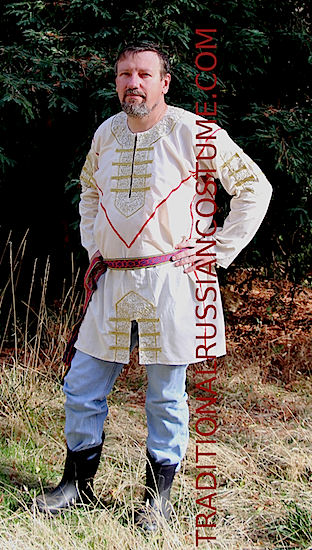
|
| |
|
ЕThis shirt copies authentic items presented at two prominent Russian museums: Moscow State Museum of History and Yaroslavl Historic MonumentЕ The authentic shirt is made of kise'a (thin and fine cotton). We applied a fabric-made muslin here. Of course, we kept all cut and fashion features of the original..
| ||
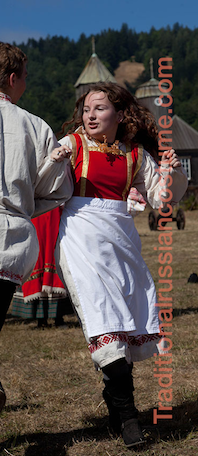
|
| |
|
Еthe original of this work belongs to a collection of Russia State Museum of Ethnography (Saint-Petersburg). We made an exact copy of the cut and style of an authentic outfit, but used new fabrics, for sure. | ||
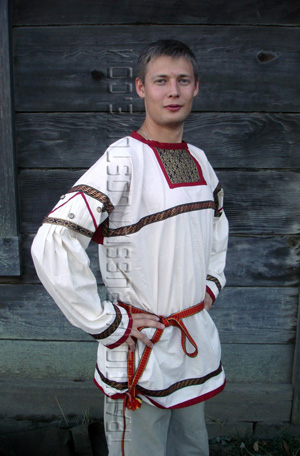
Made by Irina Zhoukova |
| |
|
...the bachelor's outfit was required to be rich and attractive - to show to neighbours (practical level of thinking) and spirits of the ancestors (spiritual/religious level)
the wealthiness of a family, and the ability to feed one more branch of a family (new-married couple and their children). The whole bachelor's outfit consisted of 15-20 parts... | ||
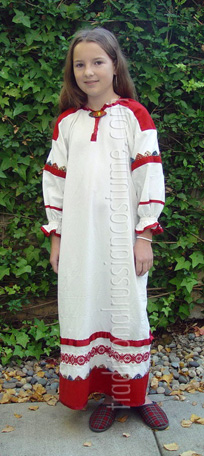
Made by Irina Zhoukova |
| |
|
...around the age of 9, a child changed social category from kid to "otrok" (pre-teen). This transition was reflected in his/her costume. Boys got their first pants and "grown-up-like" hats. For girls there was a special ritual called "Jumping Into a Skirt"... | ||
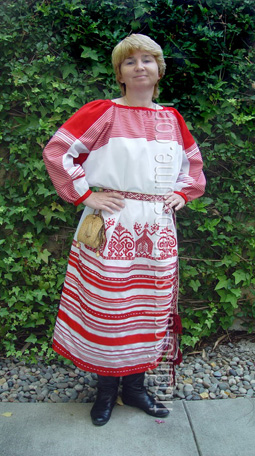
Made by Irina Zhoukova |
| |
|
Еfrom farmers' point of view, Mother Earth literally gives birth to a harvest and spends some of Her power for it. So, harvesting people suppose to give some of their
energy back to Mother Earth (as a reward). If they wouldn't do so, nothing would grow next year... | ||
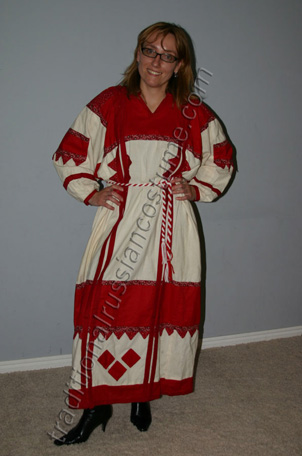
Made by Irina Zhoukova. |
| |
|
...this dress is the ritual outfit ALL village women (married and non-married yet) supposed to be dressed for the first day of harvesting... | ||
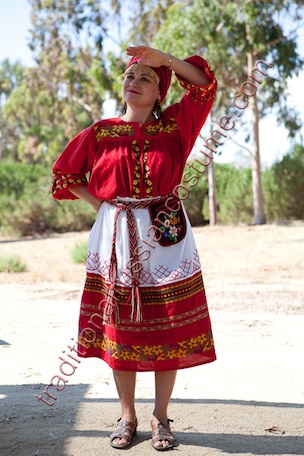
|
| |
|
Еin accordance with its ritual purpose (energy exchange between a woman-harvester and the Mother the Damp Earth), the dress is made of a red cloth mostly. The white part is edged with an archaic-style pattern. It consists of...
| ||
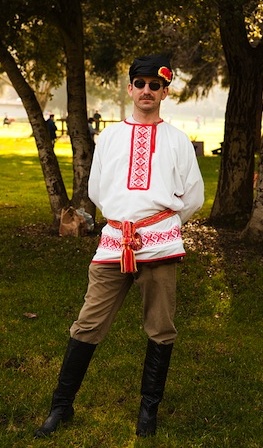
Made by Anna Nikolaeva (embroidery) and Irina Zhoukova |
| |
|
Еthe cut of this outfit is a common Russian one. It is a chiton-like shirtЕ the most interesting part of the shirt is the design of embroidery. It is taken from a needlepoint collection published by an ethnographer K.Dalmatov in 1896Е | ||
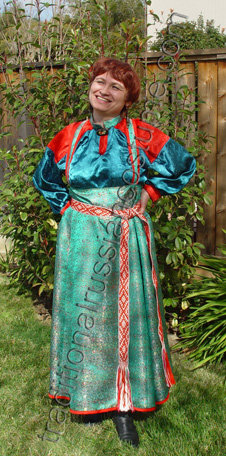
Made by Irina Zhoukova. |
| |
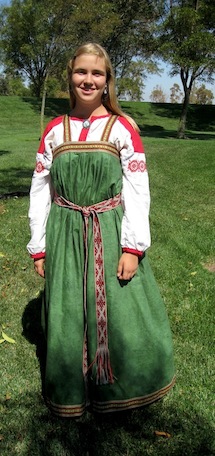
Made by Irina Zhoukova |
| |
|
ЕЕa Plekhovo-style sarafan belongs to so-called "round-cut style" - a relatively late type of a cut; it was established after 1860sЕ a distinguished feature of a Plekhovo style are dense folds on the back side of a sarafanЕ | ||
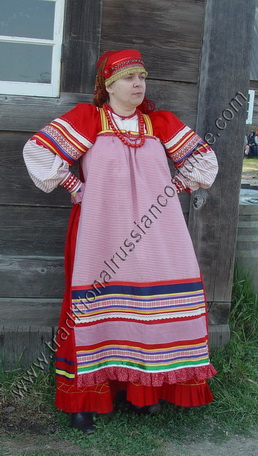
Made by Sonia Krugloff (headdress) and Irina Zhoukova |
compare to the paradigm >>> | |
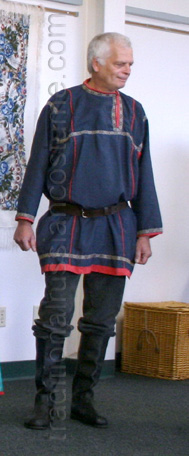
Made by Nataly Marchouk |
| |
|
Еa wearer could be not so old, but if he was the last adult man in a family, he supposed to wear dark-blue as a sign of his status and responsibilities... | ||
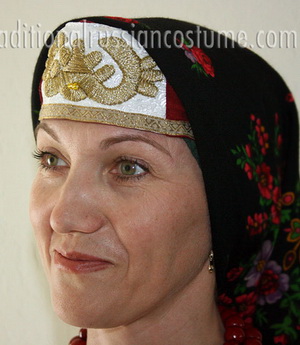
Made by Sonia Krugloff |
| |
|
...Kargopol-style soroka consists of three parts... | ||
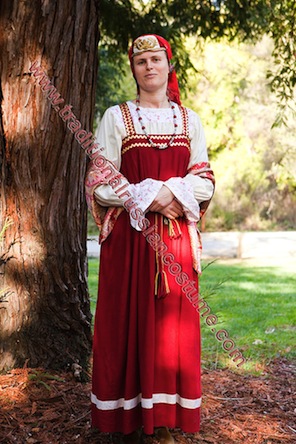
Made by Irina Zhoukova (shirt and sarafan), and Sonia Krugloff (headdress) |
| |
|
Еto be precise, the outfit represented here combines items, which belong to different parts of the Archangel region... | ||
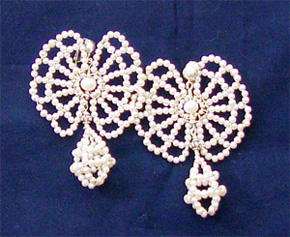
Made by Elena Kurasheva. |
| |
|
Еfrom farmers' point of view, these earrings resembled a shape of a butterflyЕ | ||
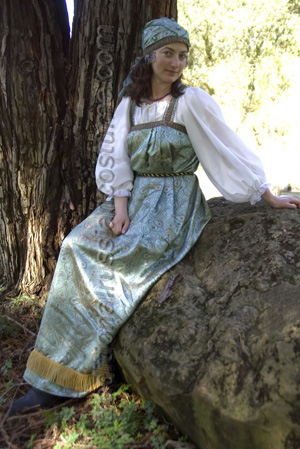
Made by Irina Zhoukova |
| |
|
...speaking of merchants, among them a pretty interesting clothing style appeared at that time: it combined "the ancectors' fashion", on one hand, and European-like taste in coloring and decoration, on the other hand... | ||
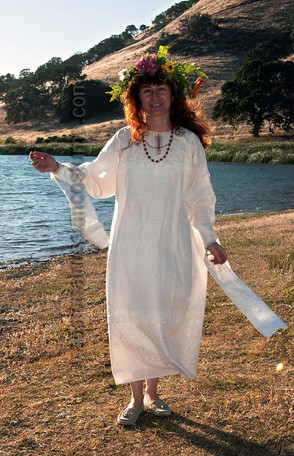
Made by Irina Zhoukova |
| |
|
... such a dress was mandatory for "rusalka" rites. Those rites were dedicated to spirits of trees and rain clouds... | ||
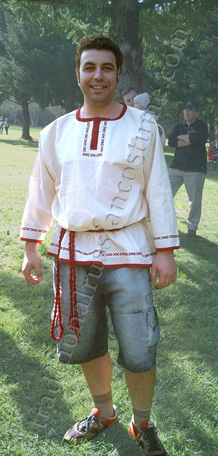
Made by Irina Zhoukova |
| |
|
...this shirt is of an archaic chiton-like design. It is the most common for Slavic and Russian festive shirts. The cut is: a rectangular piece of cloth is folded half-by-half across a warp (along a woof)... | ||
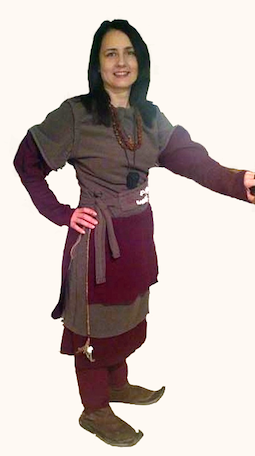
Made by Martina Mronga, a member of "Live action role playing group" - a reenactment group of the Viking period, Germany. |
| |
|
Еin this period of time (900-1000 AD), Baltic region (north-eastern Europe plus north-western Russia) was inhabited by several different ethnic groups: Finno-Ugric peoples (Merya, Ves, Karelians, Laplanders, and others - not Finns themselves), northern Slavs (pre-Russians), and Balts (pre-Lithuanians). Lifestyle of all these peoples was similar, because it was determined by climate conditions and natural resources available. Clothing style of all mentioned peoples was similar also. A wardrobe consisted of same articles, similar in cut, but highly diverse in decorationЕ
| ||
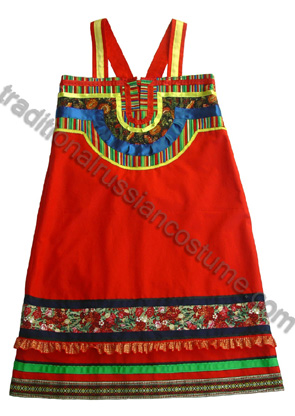
Made by Irina Zhoukova |
| |
|
...when we announced "a Kharkov-style sarafan", our Ukrainian friend replied angrily: "Nonsence! There is no such a thing! Kharkov women have worn poneva-skirts, no sarafans!"
Generally speaking, she is right... | ||
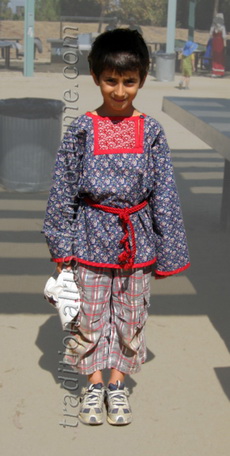
Made by Irina Zhoukova |
| |
|
...traditional costume is not an everyday clothes for us anymore. It became just... just costume for special occasions. Therefore we decided not to follow the tradition literally... | ||
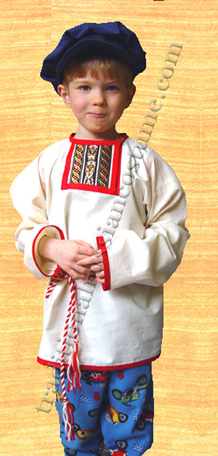
Made by Irina Zhoukova (the shirt) and Sonia Krugloff (the hat) |
| |
|
...cossacks people felt themselves different from peasants because peasants were enslaved in tsarist's Russia, and cossacks were not. And, cossacks demonstrated this difference in every way of life, including their clothes... | ||